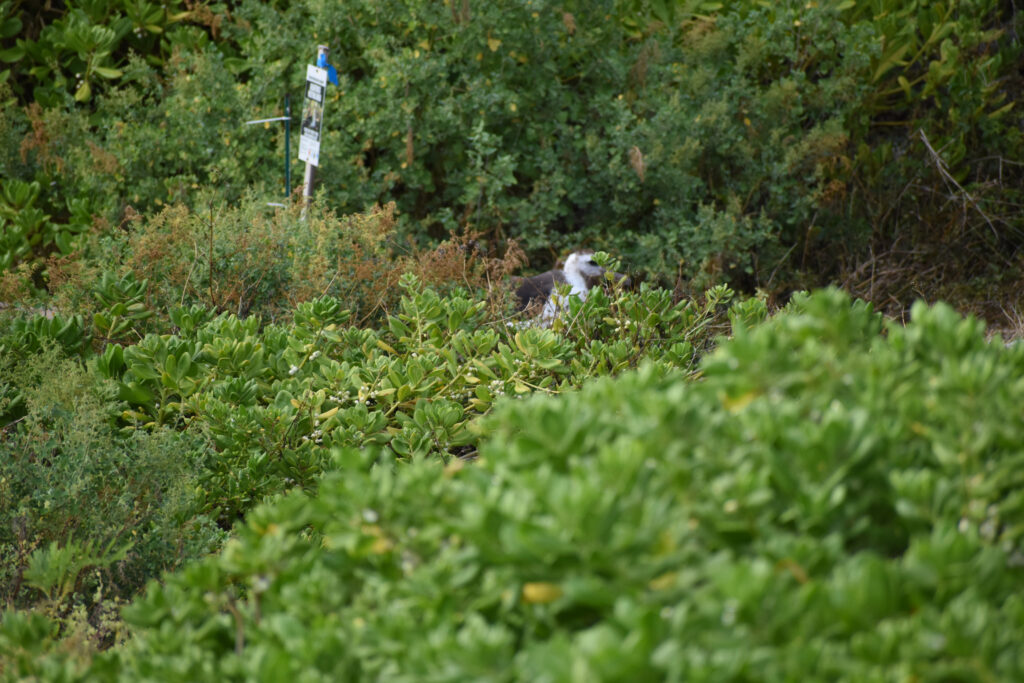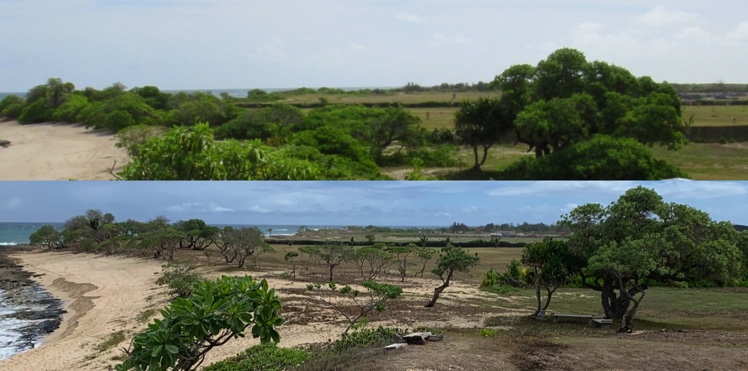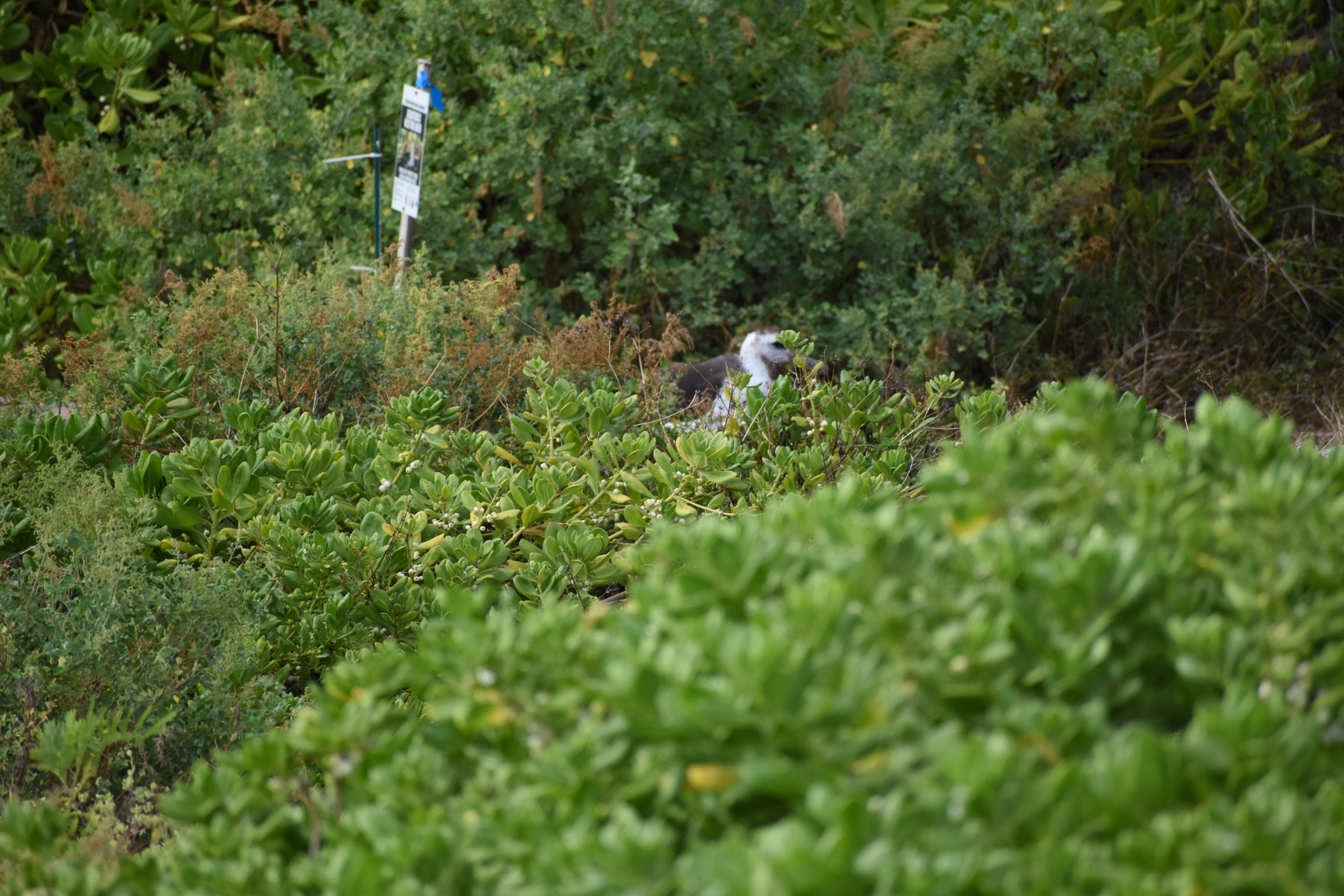On December 4, the City & County of Honolulu’s Department of Planning and Permitting finally issued a Notice of Violation for unauthorized clearing of coastal vegetation at Marconi Point on Oʻahu’s North Shore. The clearing, which the DPP notice says violated the city’s land use ordinances regarding grading, soil erosion and sediment control, occurred in early October.
The department’s penalty for illegally grubbing 4.93 acres — the equivalent of nearly four football fields — that was either adjacent to or included well-known habitat for protected migratory birds and endangered bees?
A mere $200.
Under the City & County of Honolulu’s ordinances, a civil penalty of up to $100,000 may be levied for a violation within the county’s Special Management Area, plus $10,000 for each day that the violation persists.
The entire 100-acre Marconi Point Condominiums project lies within the SMA and the City & County is, in fact, in the midst of a lawsuit over its position that the landowners must apply for a SMA permit for planned farm dwellings and subdivisions there.
Even so, the DPP has so far chosen not to issue a SMA violation notice for the unauthorized grubbing, which was apparently undertaken at the behest of the new owner of several of the agricultural CPR’s units.
Rather, the department last month issued a violation notice for grubbing without a permit. Although the maximum fine for that offense is $1,000, the DPP chose to impose a $200 fine, with the possibility of additional fines of $100 a day if the violation was not corrected or a grading permit was not applied for by January 3. (The violation notice does not specify what corrective actions are required.)
On October 19, the state Department of Land and Natural Resources issued a notice of alleged violation to the CPR unit owners for the unauthorized clearing, and for tree removal, spreading of mulch and the construction of fence lines within the Conservation District.
Each violation could incur fines of up to $15,000 per day plus administrative costs when the matter is brought before the state Board of Land and Natural Resources. A DLNR spokesperson said that it will be brought to the board early this year, perhaps this month or next month.
“Of concern to the department is that habitat for the endangered yellow-faced bee and native birds has been altered. Mulch is a breeding site for the invasive Rhino Beetle that is infesting and killing palms,” a DLNR press release stated.

The extent to which those same activities occurred in the adjacent SMA outside the Conservation District is unclear. As of press time, Shichao Li, a planner with the state’s Coastal Zone Management Program was still waiting for more information from the DPP on any SMA-related enforcement actions for the work done.
The DPP did inform Li that any SMA violation would be tied to a shoreline violation or a building violation within the SMA. In the Marconi Point case, the grubbing NOV was not served to all of the CPR owners, but only those who owned units along the coastline. Still, the DPP enforcement officer told Li that they had not seen or come across any mention of a proposed SMA violation for the unauthorized grubbing.
Environment Hawaiʻi also did not receive a response from the DPP by press time to questions about whether it was considering issuing a SMA violation notice, and if not, why not.
Under Chapter 25 of the Revised Ordinances of Honolulu, development within the SMA requires a permit. Development includes, among other things, “[t]he placement or erection of any solid material, or any gaseous, liquid, solid, or thermal waste,” “[g]rading, removing, dredging, mining, or extraction of any materials,” as well as a “[c]hange in the intensity of use, ecology, or access to water.”
Chapter 25 exempts several activities from the definition of development as it applies to the SMA. The only exempt activity that could possibly apply to the clearing work done last October is the use of land “for the purpose of cultivating, planting, growing, and harvesting of plants, crops, trees, and other agricultural, horticultural, or forestry products; animal husbandry; aquaculture or mariculture of plants or animals; or other agricultural purposes, subject to review by the agency in accordance with subdivision.”
However, Chapter 25 also states that whenever the DPP finds that “a use, activity, or operation that is not otherwise considered development may have a significant adverse environmental or ecological effect on the special management area, that use, activity, or operation will be defined as development for the purposes of this chapter.”
Whether the Marconi Point owners have argued that the clearing was not development that would require a SMA permit was unknown by press time. The DPP did not respond to Environment Hawaiʻi’s request for correspondence with the property owners regarding the vegetation clearing along the coastline.

— Teresa Dawson
(This article was amended to reflect when the Conservation District violation case was expected to come before the Land Board.)


Leave a Reply